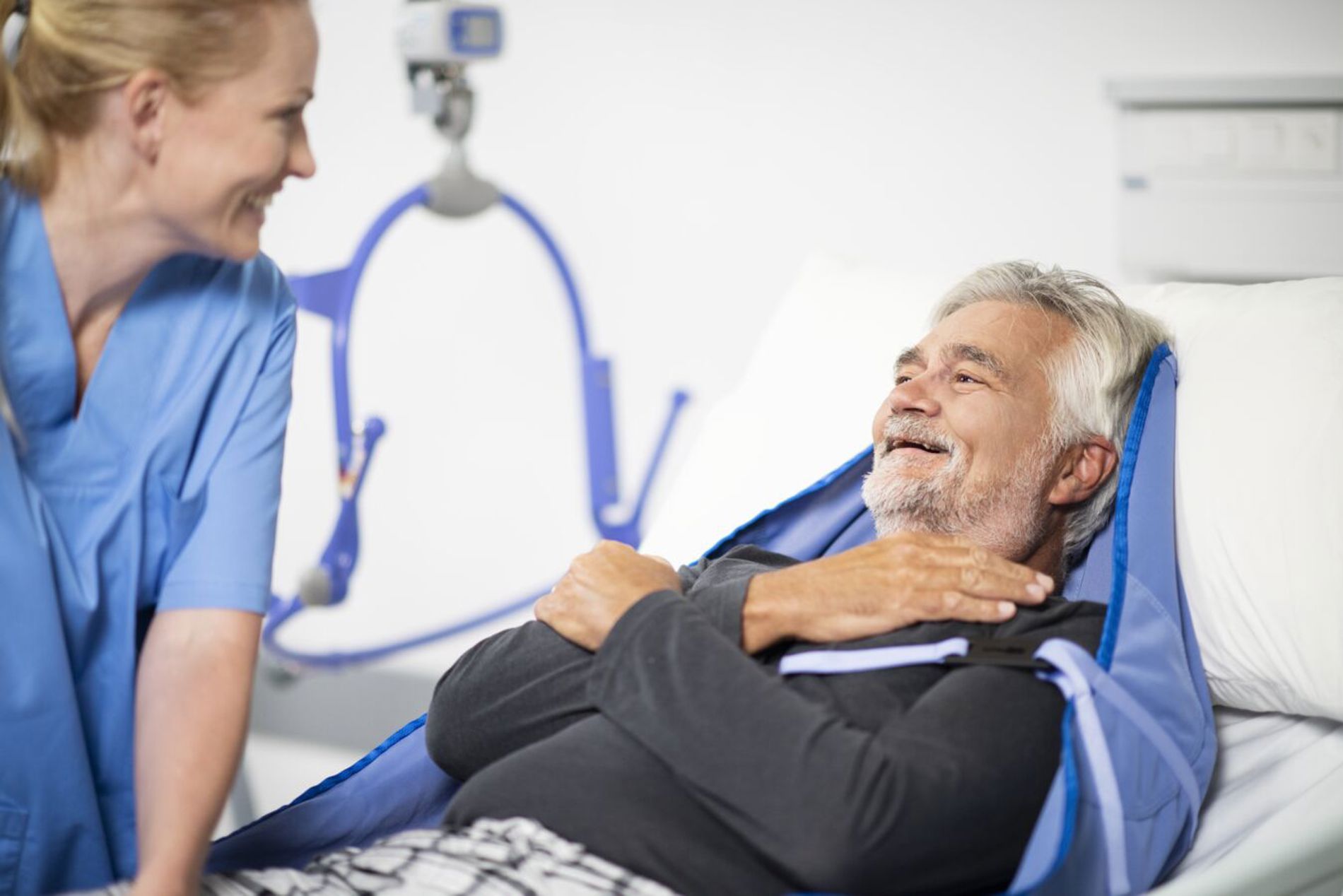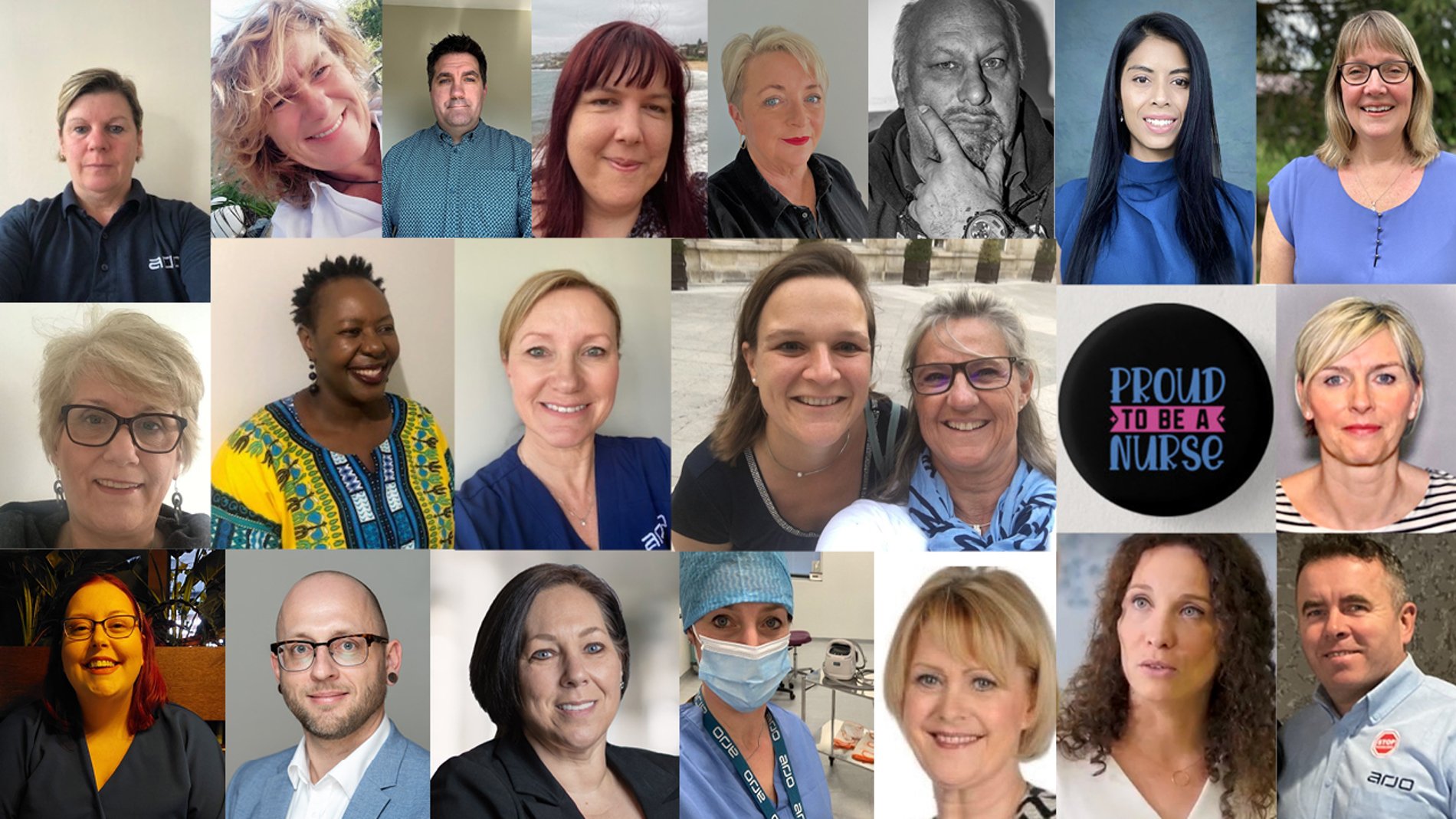How can you offer more high-quality healthcare with fewer resources?
Global healthcare is under pressure from growing care needs, rising costs and increasing demands for a reduced environmental impact. In order to optimize their use of resources, healthcare providers need solutions that create value in new and different ways – and for this, mobility is a key driver.

Many hospital-acquired conditions (HACs) are caused by insufficient patient mobility. Using the right equipment and work methods to make sure HACs never occur, or at least are minimized, is the best way to avoid patient suffering, reduce workload for staff, and ensure efficient use of healthcare resources. As Dr. William Padula, President of the U.S. National Pressure Injury Advisory Panel (NPIAP) states, there are great gains to be made if healthcare increases the focus on preventive work:
“A clear example is pressure injury, where we in the US estimate the total cost of treating a severe pressure injury to be between 75,000 and 250,000 dollars. However, it only costs 50-100 dollars per day per patient to implement preventative measures. The calculation clearly shows that it is much more cost-effective to introduce preventive measures for all patients, than to treat the complex cases that have developed into severe pressure injury,” says Dr. Padula.
Increased mobility in healthcare creates multiple values:
Preventing immobility acquired conditions
Immobility acquired conditions, such as pressure injuries and venous blood clots (venous thromboembolism, VTE), cause patients immense suffering and result in significant cost for healthcare providers. This is often entirely avoidable through preventive solutions.
VTE results in fatal outcomes in more than twice the number of cases where people suffer from breast cancer, prostate cancer, motor vehicle accidents and AIDS combined. ¹
Aiding the return to mobility
Reduced mobility due to illness or injury accelerates muscular dystrophy, which can lead to a strenuous and prolonged recovery. Our products and solutions are designed to help promote safe and early mobility.
Critically ill patients suffer a reduction in muscle strength of up to 40% in the first week of immobility. ²
Eliminating work-related injuries
Each year, a large number of healthcare employees are affected by work-related injuries. By using the right equipment and care settings designed to simplify safe patient transfers, many of these injuries can be avoided.
50-60% of all global healthcare professionals are affected by muscular skeletal disorders. ³
Raising the quality of care and life
Healthcare is under pressure from the rising number of elderly people and increasingly complicated care needs, for example in relation to dementia. The right equipment, environment and skills can empower staff to provide person-centred care that improves clinical outcomes and reduces the risk of complications.
Dementia is a condition affecting more than 60% of long-term care residents.⁴
Improving efficiency and costs
Many care facilities struggle to find the capacity and resources needed to meet growing demands in healthcare today. With the right expertise, processes and equipment, they can reduce cost and increase efficiency.
The World Health Organization (WHO) predicts increased global demand for health and social care staff with the creation of 40 million new jobs by 2030.

How to take mobility insights from theory to practice
Arjo’s evidence-based model Arjo Positive Eight describes the eight steps of a care process in which the right care setting, equipment and care skills create conditions for safeguarding and stimulating patient mobility. This flow provides positive feedback, leading to continuous improvements that add value for patients, staff and healthcare providers.
The eight steps of the Positive Eight philosophy:
1. Mobility
2. Improved vital functions
3. Reduced consequences of immobility
4. Quality of life
5. Reduced need for support
6. Reduced injuries and improved efficiency
7. Reduced sick leave and staff turnover
8. Improved care and financial outcomes

Watch our full video about the Positive Eight philosophy here: https://www.arjo.com/int/knowledge/positive-eight/
The values created for patients, staff and healthcare providers:
Patient safety and mobility
By ensuring that each patient and resident is supported with the right equipment and that caregivers have the right care skills, mobility can be maintained or improved, with reduced risk for injury.
Clinical outcomes
Clinical outcomes such as pressure injuries, falls, functional incontinence and urinary tract infections are all closely associated with immobility.
Efficient working processes
Focusing on maintaining and promoting mobility keeps patients and residents moving, and reduces the burden of care.
Staff safety and well-being
Preventing physical and psycho-social overload, which may lead to injury and absence when providing assistance with mobility and care tasks to patients and residents.
Financial outcomes
High costs are associated with undesirable patient outcomes related to immobility. Equally, the costs of caregiver injuries associated with supporting dependent patients and residents without the right processes and equipment results in negative financial impact to the organization.
A partner offering complete solutions with guaranteed result
We help thousands of healthcare providers around the world to create the best conditions for patient mobility in care settings. Together with our customers, we analyse the unique requirements of each care unit and develop customized solutions that not just involve the right equipment, but also safeguards the care skills and work processes. As a mobility outcome partner working closely with customers, we are changing care practices, measuring and monitoring key performance indicators and guaranteeing improved clinical and financial outcomes.
Ready to offer more high-quality care with fewer resources? Contact one of our experts today: https://www.arjo.com/int/contact-us/
References
1. Cohen AT et al., 2007
2. Topp R, et al. The effect of bed rest and potential of prehabilitation on patients in the intensive care unit. AACN Clin Issues. 2002;13(2):14
3. American Nurses Association. Health and Safety Survey, 2011
4. Alzheimer’s Disease International, 2011


